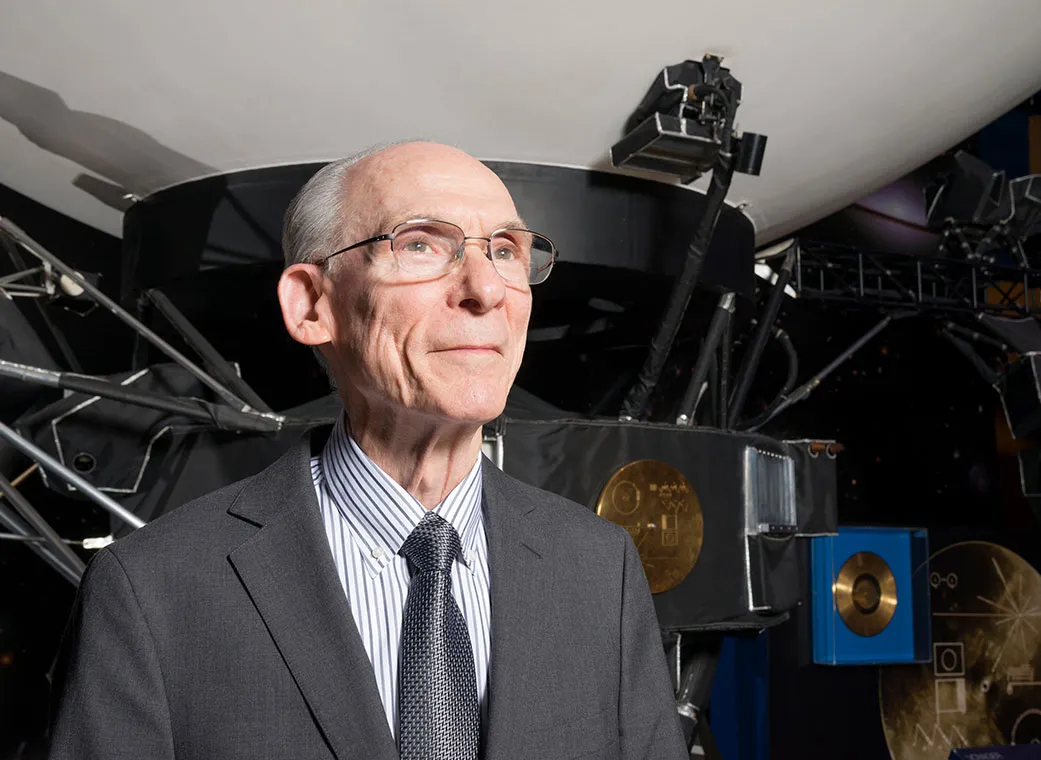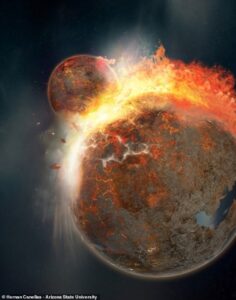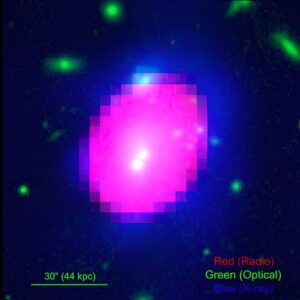Stone took the lead in adapting the peer review process to the faster pace of the mission’s planetary meetings: In the early afternoon, after the data was received, teams of scientists would decide what they thought were their best results of the day and hold their conclusions for feedback to the entire scientific steering group.
Based on this discussion, Stone will select the most interesting results to present to the media and public the following morning. The scientists would then refine their presentations that evening and even into the night—with Stone often pressing them to come up with analogies that would make the material more accessible to a lay audience—while a graphics team worked on gathering supporting images. After the press conference the next morning, the process will start all over again. This cycle can continue every day during each planetary encounter.
“It was a very exciting time, and everyone was making discoveries,” said Stamatios “Tom” Krimigis of the Johns Hopkins Applied Physics Laboratory, who has served as principal investigator of Voyager’s Low Energy Charged Particle Instrument since the mission’s launch. “Ed’s approach showed us how much public interest there really is in what Voyager is doing, but it also led to better science.” You need more than one piece of information to make a picture, and hearing about other scientists’ data helped us interpret our own.”
It was a process that continued to serve the Voyager team well in 2012 and 2013 as they debated whether or not Voyager 1 had left the heliosphere and entered interstellar space. Some signs pointed to a new environment, but one key marker — the direction of the magnetic field lines around Voyager — hadn’t changed as significantly as scientists expected.
The team remained puzzled for months until Voyager 1’s Plasma Wave Instrument detected a significantly denser plasma environment around the spacecraft — the result of a random burst of material from the Sun that caused the plasma around Voyager 1 to ring like a bell. Stone assembled the team.
“Nobody could wait to get to interstellar space, but we wanted to do it right,” said Suzanne Dodd, who has served as the Voyager project manager, leading the engineering team, at JPL since 2010. “We knew there would be people who disagree. So Ed wanted to know the whole story and the assumptions people were making. He did a good job of listening to everyone and letting them participate in the dialogue without anyone monopolizing. Then he made a decision.”
Stone realized that scientists should not fixate on the direction of magnetic field lines. They were a substitute for the plasma medium. The team concluded that the discovery of the plasma wave science instrument provides a better analysis of the current plasma environment and is evidence of humanity’s arrival in interstellar space.
Lead JPL
Voyager’s high reputation raised Stone’s reputation as well. In 1991, roughly two years after the planetary mission was completed, Stone became director of JPL, serving until 2001. Under his leadership, JPL was responsible for more than two dozen missions and instruments. Highlights during Stone’s tenure include landing NASA’s Pathfinder mission with the first rover, Sojourner, in 1996 and launching the NASA-ESA (European Space Agency) Cassini/Huygens mission in 1997. The first Saturn orbiter, Cassini , was a direct result of the science questions that arose from Voyager’s two flybys, and it carried the only probe ever to land in the outer solar system (on Titan).
The 1990s were an era of shifting national priorities after the Cold War, with significant cuts in NASA spending and defense budgets. Stone restructured several missions so that they could fly under these tighter cost constraints, including overseeing the redesign of the Spitzer Space Telescope’s cooling system so that it was more cost-effective and could still deliver high-impact science and stunning infrared images of the universe.
A trip to space
Edward Carroll Stone Jr. was born on January 23, 1936 in Knoxville, Iowa. The eldest of two sons of Edward Carroll Stone Sr. and Fern Elizabeth Stone, he grew up in the nearby Burlington Mall.
Edward Stone Sr. was a construction foreman who enjoyed showing his son how to take things apart and put them back together—cars, radios, hi-fi stereos. When the younger Stone was in junior high, the principal asked him to learn how to operate the school’s 16mm film projector, and a request to run the school’s reel-to-reel tape recorder soon followed.
“I’ve always been interested in learning why something is this way and not that way,” Stone said in an interview about that career in 2018. “I wanted to understand and measure and observe.”
His first job was at a JC Penney department store, where he worked his way up from the warehouse to a store clerk. He also earned money playing French horn in the Burlington Municipal Orchestra.
After high school, Stone enrolled at Burlington Junior College to study physics and went on to the University of Chicago for graduate school. Shortly after it was accepted, the Soviet Union launched Sputnik and began the space age.
“Space was a brand new field waiting to be discovered,” Stone recalled in 2018.
He joins a team at the university that creates scientific instruments to launch into space. The first he designed rode aboard Discoverer 36, a declassified spy satellite that launched in 1961 and took pictures of Earth from space as part of the Corona program. Stone’s instrument, which measures the Sun’s energetic particles, helped scientists understand why solar radiation blurs the film and ultimately improved their understanding of the Van Allen belts, energetic particles trapped in Earth’s magnetic field.
In 1964, Stone joined Caltech as a postdoctoral fellow, directing the university’s Cosmic Radiation Laboratory with Robbie Vogt, who had been a colleague in Chicago. They have worked closely with a number of NASA satellite missions studying galactic cosmic rays and solar energetic particles. In 1972, Vogt recommended Stone to JPL management for the Voyager project scientist position, which he held for 50 years.
Among Stone’s many awards, the National Medal of Science from President George H.W. Bush stands out as the most famous. In 2019, he won the $1.2 million Shaw Prize in Astronomy for his leadership of the Voyager project, which, as the citation notes, “over the past four decades has transformed our understanding of the four giant planets and the outer solar system and has now begun to explore interstellar space. He was also proud to have a middle school named after him in Burlington, Iowa, as an inspiration to young students.



